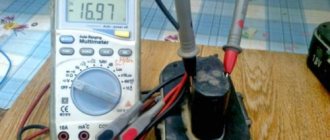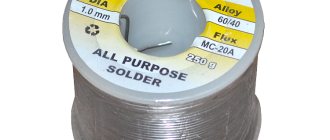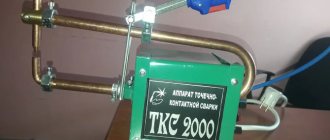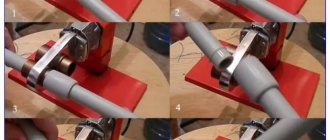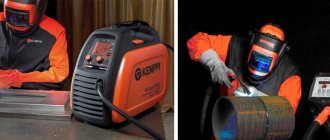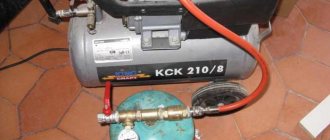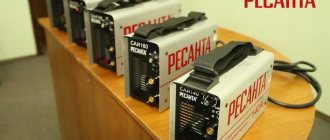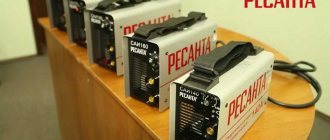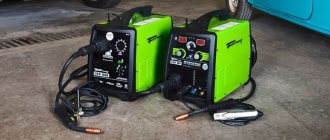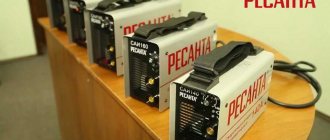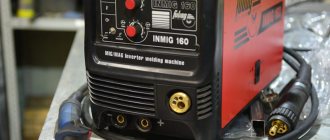Types of batteries by type of materials used
Which batteries are best for a screwdriver are usually indicated in the instructions for this tool. The battery type is indicated in Latin letters. Most often, high-current 18650 batteries are used for screwdrivers. However, there are other options.
Such devices are produced by a variety of brands. The most famous include Bosch (Bosch), Hitachi, Zubr, Interskol, Metabo. It is also possible to order a battery on Aliexpress in China. However, it is better to give preference to trusted manufacturers.
Nickel-cadmium
This type of battery appeared in the middle of the last century. They use nickel oxide hydrate as a cathode, which complements graphite powder. An electrolyte is used to move the ions. Potassium hydroxide is used in its role. It also contains an anode made from cadmium oxide hydrate.
Nickel metal hydride
This material is most often used in AA batteries. It was invented in the seventies of the last century. Nickel oxide and nickel-lanthanum are used as the main elements for accumulating and transferring charge. The first component is the cathode, the second is the anode. Potassium hydroxide is responsible for the movement of ions.
Lithium-ion batteries
These are relatively new batteries that were invented only in 1991. They are often used by Japanese companies. The cathode and anode are made of foil. A separator is installed between these elements, which has holes. A valve is used to relieve internal pressure.
Lithium polymer battery
This is a modern material that is based on the use of lithium-ion technology. Therefore, it is almost never used for the production of electrical equipment. Instead of a standard electrolyte, such devices use a gel polymer. Thanks to this, manufacturers were able to significantly increase capacity. In addition, they can give the battery any shape.
Note! If you need to buy an affordable and long-lasting battery, a nickel-cadmium model is suitable. If you need a high volume of capacitive charge, you should use lithium-based products.
There are different types of battery materials
Review of the best manufacturers
Manufacturers of well-known brands such as Metabo, Makita, Hitachi, Bosch, AEG, Devolt produce screwdrivers with different types of batteries. The devices are intended for both domestic and professional use.
The most famous brands of manufacturers:
- Hitachi (Japan) a tool with individuality and good parameters for any working conditions;
- Makita (Japan) since 1915 in the construction tools market, Japanese quality together with new technologies make these tools in demand around the world.
- the German company Bosch produces power tools for household and professional needs;
- AEG (Germany) - a manufacturer of high-quality household appliances and construction tools has been known throughout the world since the 19th century;
- The Metabo brand represents a line of cordless screwdrivers with German quality and a professional approach to technical specifications. The price category is quite high;
- Ryobi is an American brand of screwdrivers that combines excellent quality and a wide range of technical capabilities of the tool;
- DeWALT, a company from the USA, is represented on the Russian market with a small range of screwdrivers of excellent quality. According to consumer reviews, there is absolutely no defect.
Russian manufacturers Zubr and Interskol. For the price category in which these cordless screwdrivers are located, the technical characteristics are quite high.
Battery types
Today there are quite a few effective batteries that can be used in screwdrivers. However, they all have certain pros and cons. So, how to choose a battery for a screwdriver?
Nickel-cadmium and nickel-metal hydride batteries
Many people are interested in which battery is better, li-ion or ni-cd for a screwdriver. To choose, you need to understand their pros and cons.
Nickel-cadmium products belong to the alkaline category. They provide stable power and do not heat up.
The main disadvantage of the products is the high toxicity of cadmium. In addition, they have a pronounced memory effect. Therefore, the products have to be charged after being completely discharged. The advantages of the models include stable operation even in cold weather, fast charging, and light weight.
Nickel metal hydride (Ni-MH) products appeared a little later. They do not involve the use of toxic cadmium. At the same time, the main disadvantages of the products include heating of the components, a small temperature range, and loss of capacity upon complete discharge.
Lithium-ion batteries and their benefits
These batteries are considered a new development. They are not alkaline elements and are rapidly displacing Ni-Cd and Ni-MH from the market.
The advantages of such products include the following:
- no memory effect;
- high capacity;
- low self-discharge parameters;
- fast charging;
- high fire safety indicators;
- high energy intensity.
At the same time, the disadvantages of such products include high price, the need to ensure certain storage conditions, and limited service life. You also have to have special chargers depending on the type of battery.
Lithium-ion batteries have many advantages
How to increase battery life
To maximize battery life, you must carefully follow the recommendations for its use. And what’s interesting is that this information is always written in the instructions for the screwdriver. But who reads it?
At the same time, different classes of batteries differ in the requirements for their operation. Nickel-cadmium batteries have a memory effect, that is, they can remember at what stage of the discharge they began to be charged. And accordingly, they will work only until this mark is reached. Simply put, for nickel-cadmium the rule is: full discharge - full charge.
With lithium-ion, everything is even simpler - you can charge and discharge at any stage of discharge. However, it is better not to use them at low temperatures. And, of course, do not charge in the cold.
In general, the most important recommendation for all types of batteries is to avoid overheating and overcharging. This is equally bad for any battery. But first of all, the charger should take care of this. Therefore, it is better to use only branded products.
Comparison of batteries used for screwdrivers
How to choose a battery for a screwdriver? To do this, you need to take into account a number of important parameters.
Number of charge and discharge cycles
In devices with Ni-Cd batteries, this parameter reaches 1000 cycles. That is why they occupy a leading position in this indicator. In this case, Li-Ion batteries can be charged and discharged 600 times, after which they need to be replaced.
Fast charging ability
For large-scale work, craftsmen often use 2 batteries. In such a situation, charging speed matters. For nickel-cadmium and nickel-metal hydride batteries, this parameter is 4-8 hours. In this case, lithium-ion batteries can be charged from half an hour to 2 hours.
For reference! Popular European and Japanese manufacturers add a second battery to the device. In this case, the user can work almost without interruption.
Price
Nickel-cadmium batteries have the most affordable price. In second place are nickel-metal hydride batteries. Li-Ion products are considered the most expensive. Sometimes their price is half the cost of the screwdriver itself.
Response to tool operation at full power
If you need to make a hole in a hard surface, the full power of the screwdriver is required. In such a situation, it begins to actively consume charge. Ni-Cd and Ni-Mh are considered the most powerful. If you need maximum energy output, you should give preference to them.
Charge level memory effect
If the battery is not completely discharged and is put on charge, the remaining indicators are perceived by it as 0. This condition is called the memory effect. It is typical for all batteries that contain nickel. However, lithium-ion models do not have this drawback.
Self-discharge
Sometimes there is a situation in which a screwdriver was not used, and then suddenly needed. In this case, it may turn out that the battery has discharged itself and needs to be charged. This option is considered not very convenient. This situation is typical for nickel-cadmium and nickel-metal hydride batteries. In the first case, the self-discharge rate is 10%, in the second - 7-10% per month. For lithium-ion batteries it does not exceed 3-5%.
Batteries need to be charged on time
Dimensions
The batteries are attached to the screwdriver handle. Their size determines the weight of the power tool and the comfort of its use. This is relevant when working for a long time. Nickel-based batteries are considered the heaviest.
Note! Lithium-ion devices are smaller in size. They are made in the form of a clip, which takes up space in the tool handle and has no extension.
Working in the cold
Most often, this power tool is used inside buildings. But from time to time it has to be used in the fresh air or in rooms without heating. In this case, you need to know that lithium-ion models do not withstand negative temperatures well. They quickly discharge or fail completely.
Therefore, in such conditions it is recommended to give preference to batteries with nickel. They hold a charge well and can function even at temperatures of -20 degrees.
Attitude towards full discharge
This parameter affects the duration of use of the device. Lithium-ion batteries must not be completely discharged. The ideal storage option is considered to be 40% charge. Nickel batteries can be used until the power tool stops rotating completely.
Estimated service life
The duration of use is affected by the frequency and correctness of use. Lithium-ion batteries last the longest.
Which batteries are better Ni Cd or Li Ion for a screwdriver?
Both types of battery cells are good. However, the choice of battery pack type depends on the intended use.
The main difference between lithium ion batteries (Li Ion) and nickel cadmium batteries (Ni Cd) is the number of cycles. Li Ion has 1500 of them, while Cadmium has 500.
At first glance, it seems that Li Ion is much better, because the number of cycles is 3 times greater. However, it is not. When choosing a battery, be aware that the wear and tear of cadmium batteries depends on the cycles used. And the life of Li Ion batteries depends on their age.
Cadmium ones are used for 7-11 years, and Li Ion will not work after 5 years, regardless of whether they were used or not. Therefore, it is not recommended to buy several lithium blocks “for the future.” They will all fall into disrepair.
Nickel-cadmium batteries, in turn, will last much longer if they are stored correctly. This rule works even if a screwdriver with a Ni-CD battery has not been used for a whole year.
It is not recommended to buy a used screwdriver with a lithium battery, because there is a risk that it has not been used for a long time and, accordingly, is faulty or close to faulty.
On the contrary, if a used screwdriver is equipped with a nickel-cadmium battery, then it retains up to 55-60% of its charge. Even if it wasn't used.
If you do not use an electric screwdriver or drill very often, then Li Ion batteries will most likely die “of old age.” Therefore, if you are not a professional craftsman who uses a screwdriver every day, then buying a Li Ion battery does not make sense.
Cadmium batteries are best suited for household use. They last a long time no matter how long they have been idle. Nickel-cadmium batteries are stored in a box until they have reached 500 cell cycles.
Lithium needs to be constantly charged because its main storage condition is at least 60% energy. If lithium is not recharged regularly, it is highly likely to deteriorate prematurely, even if properly stored.
What to look for when buying a cordless screwdriver
To purchase a quality device, it is recommended to take into account a number of important parameters.
What does battery capacity mean?
This indicator is designated by numbers 1-7 and is estimated in amperes. Since the tool requires 1-5A per hour, it can be used for 2-8 hours.
When purchasing, you need to consider the capacity
What does battery voltage mean?
The maximum voltage setting for screwdrivers is 36 V. They are suitable for working on durable materials. Indicators of 3-10 V are typical for low-power devices. They can only be used for small fasteners or soft materials.
Voting for the best battery for a screwdriver
What would you choose or recommend?
Topon TOP-PTGD-HIT-12(B)2
0.00 % ( 0 )
Hitachi EB1233X
8.33 % ( 1 )
Practice 031-679
0.00 % ( 0 )
Charge NKB 1220 HT-A
25.00 % ( 3 )
BOSCH 1600A00X7H Li-Ion 12 V 6 Ah
16.67 % ( 2 )
Practice 031-631
0.00 % ( 0 )
Pitatel TSB-048-BOS12A-20C
8.33 % ( 1 )
Bosch 1600A012UV
8.33 % ( 1 )
Hammer AKB1215
8.33 % ( 1 )
Makita 193101-2 1434
0.00 % ( 0 )
Hammer AKM1220
0.00 % ( 0 )
Makita 198311-6
8.33 % ( 1 )
Makita 197280-8
0.00 % ( 0 )
Makita 1235
0.00 % ( 0 )
Disassembling the battery
Before disassembling, the battery must be charged as much as possible. This is necessary for subsequent diagnostics. If this fails, you will need to charge the elements separately. To do this you will need a regulated power supply.
Next you need to disassemble the housing of the battery pack. The process depends on the design - in some places you will need to unscrew the screws, in others you will need to press out the latches. If the body is connected with glue, the process will be more labor-intensive, but the result is still achievable.
Disassembling the battery case.
As a result, you will need to remove the battery cells connected in series. There is no need to separate them unnecessarily.
Extracted cells.
Nickel metal hydride batteries
New rechargeable batteries for screwdrivers have been developed to reduce the memory discharge level as much as possible
NI-MH has been reduced in size and weight. The element was created with a durable body that is resistant to dynamic loads. According to technical characteristics, positive properties are highlighted:
- low toxicity;
- high capacity;
- resistance to mechanical damage;
- charging-discharging is equal to 1500 cycles.
Experts include the following negative aspects of the device:
- lack of functionality at sub-zero temperatures;
- discharges quickly;
- takes a long time to charge.
It should be taken into account when choosing a drive that if you store NI-MH discharged, some of their characteristics disappear.
Nickel-cadmium batteries
Nickel-cadmium batteries for screwdrivers, the most ancient and popular photos
They have been used for a whole century, which is significant given the speed of technology development in all areas of human activity. The element was created with a good volume of capacity and not expensive in price.
The following parameters can be assessed as advantages by users and experts:
- durability, if properly operated and cared for, the battery will last 10 years;
- unpretentiousness to the environment and work in any conditions with a high degree of reliability;
- charge-discharge is designed for 1000 cycles;
- storage - can remain discharged for a long time.
When the tool stops from being completely discharged, it is connected, restoring capacity without damaging the battery. The downside of drives is their size, weight, dependence on the notorious memory effect, and toxicity. Environmentalists in some countries even banned the release.
How to choose a screwdriver for your home
Which screwdriver to choose for your home: electric (mains) or battery. It all depends on the work that will be done. A battery-powered screwdriver is more mobile, not tied to a location, and can work anywhere. To choose the right cordless screwdriver for home work, you must first pay attention to the technical characteristics of the tool. It is not necessary to overpay for a high power rating or rotation speed.
If you are going to often use a screwdriver to drill holes, choose a model that is more expensive and more reliable. If your activity will be outdoors, pay attention to the type of battery. Nickel-cadmium will be more reliable than lithium-ion. Keep in mind that lithium is lighter, which means your hand will get less tired. It also charges faster. The continuity and efficiency of work depends on this indicator.
